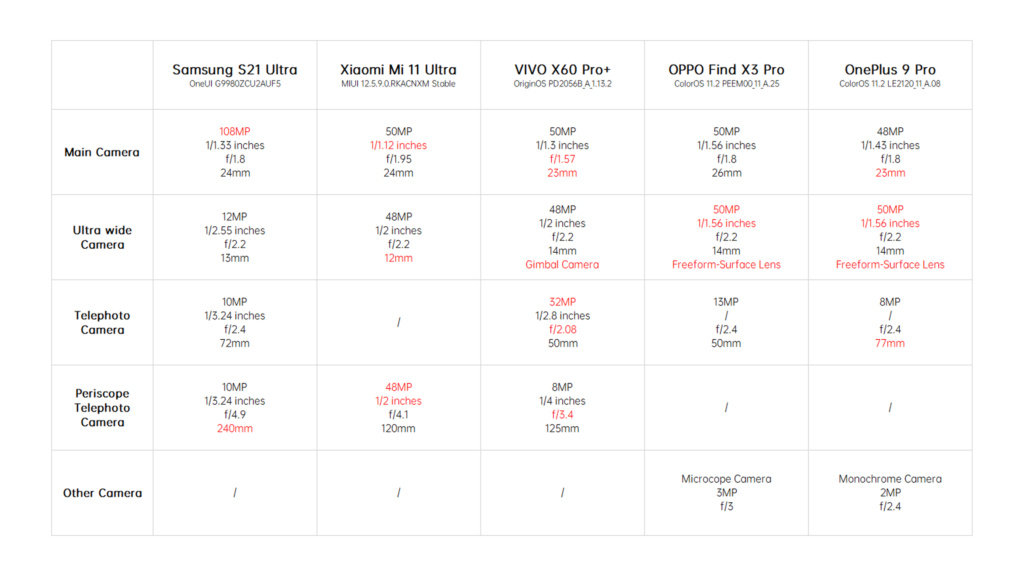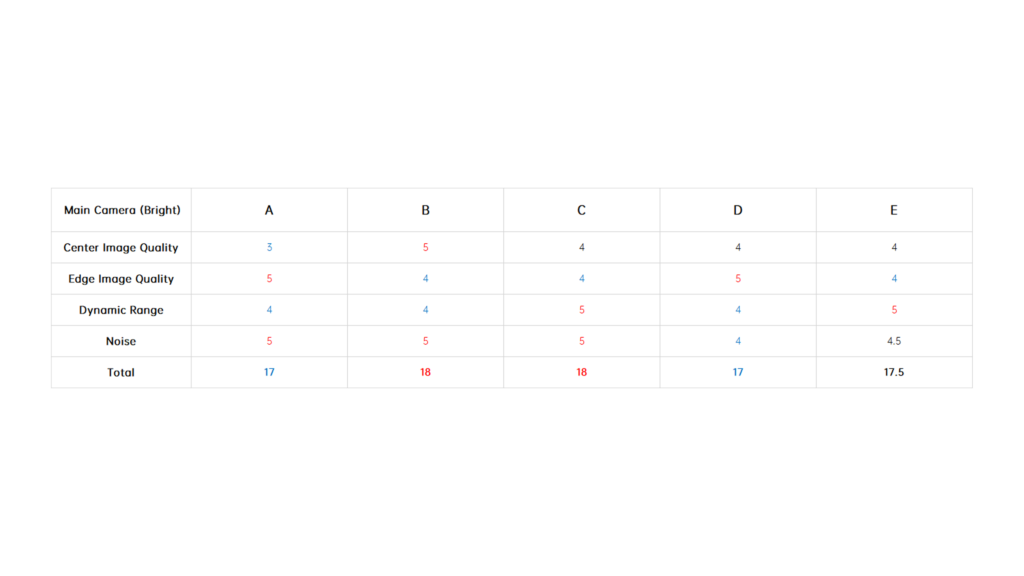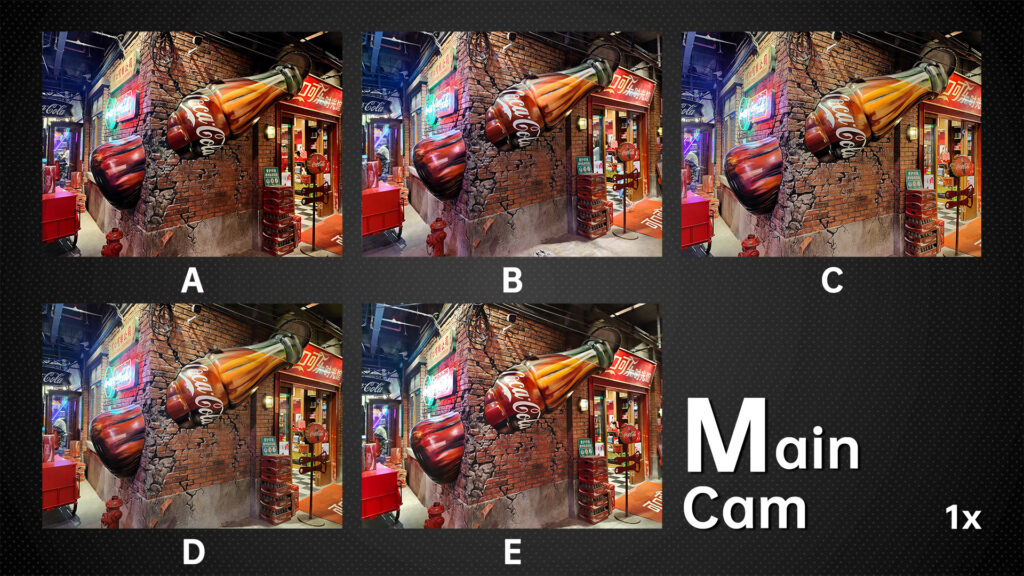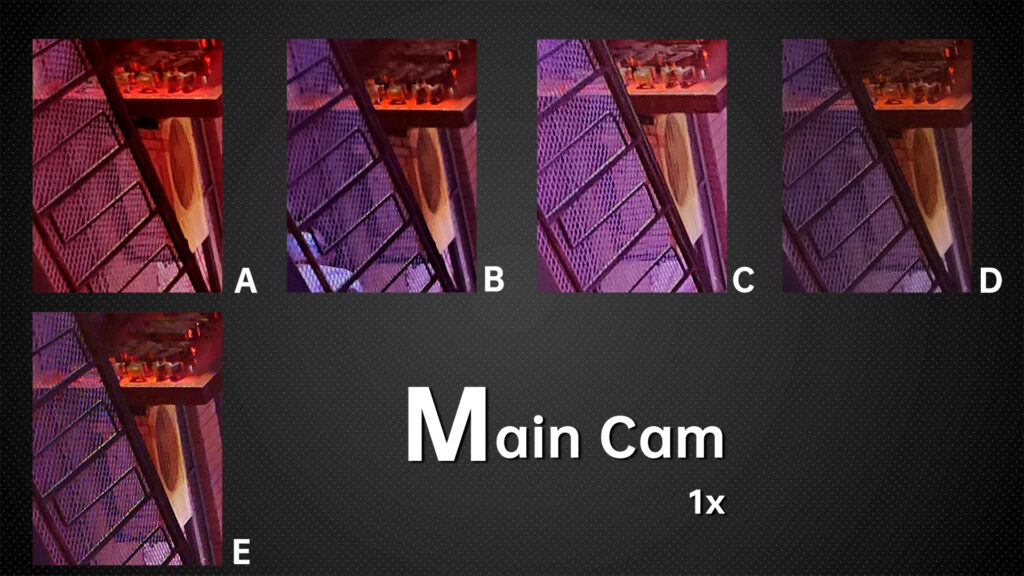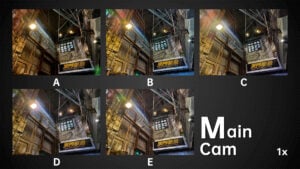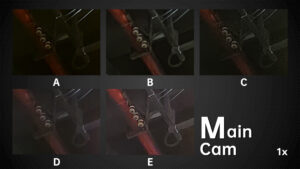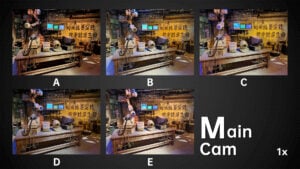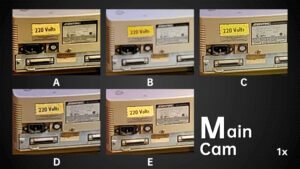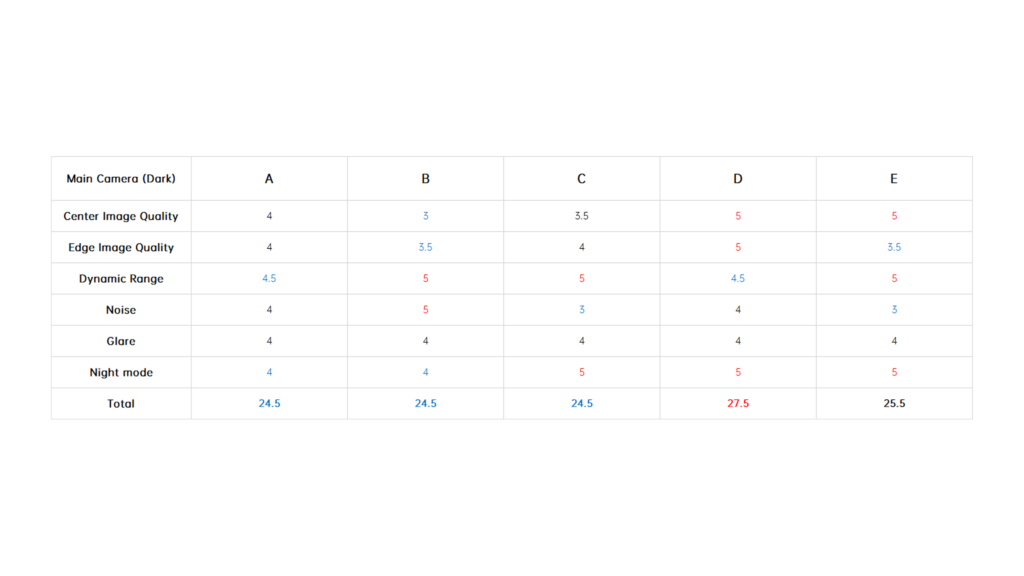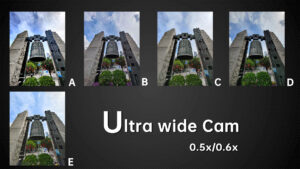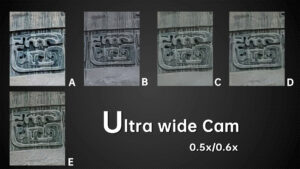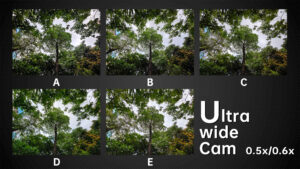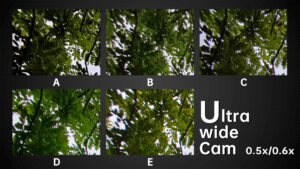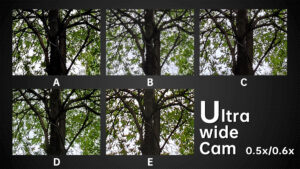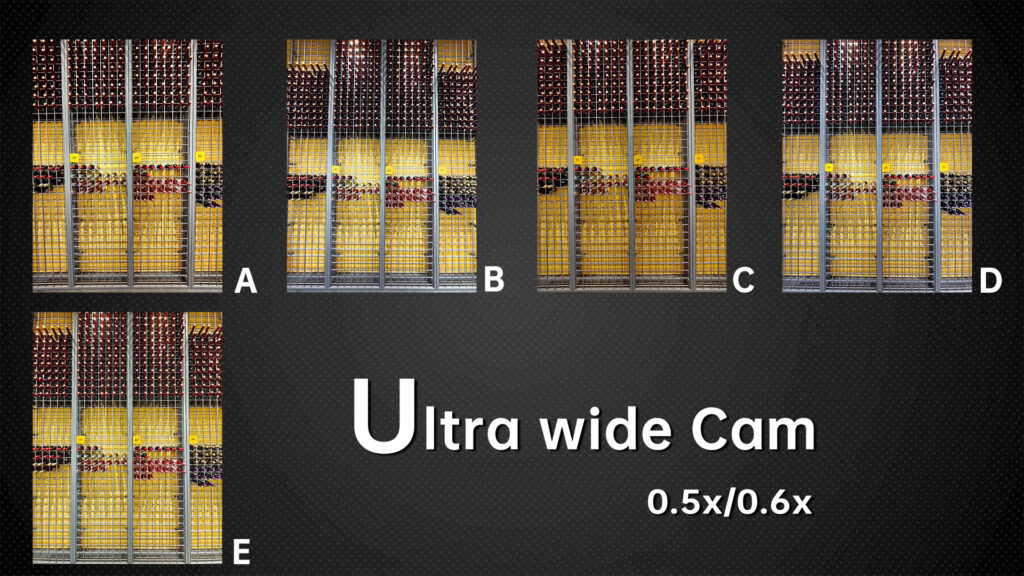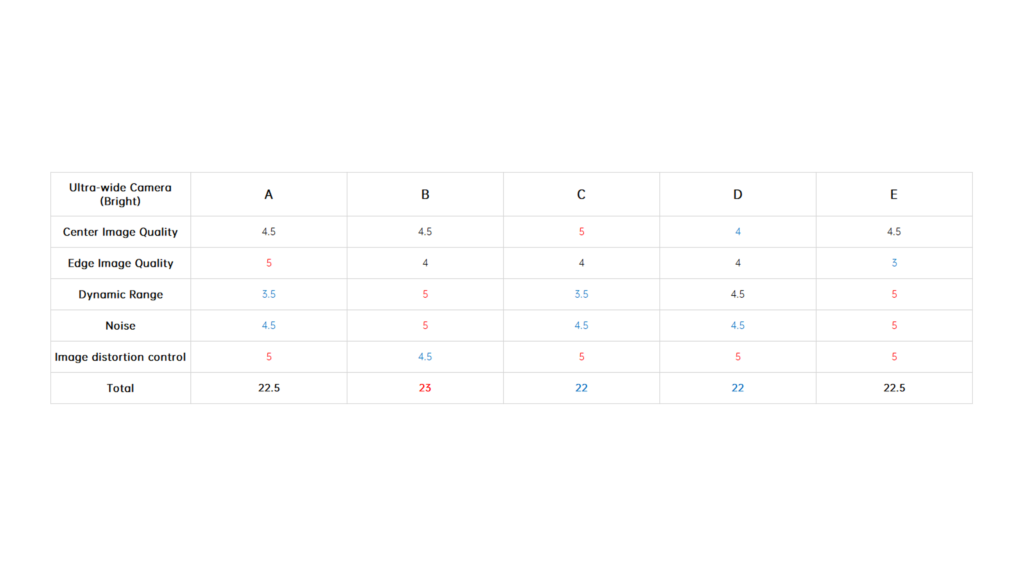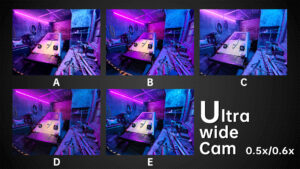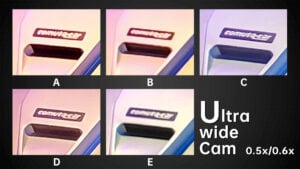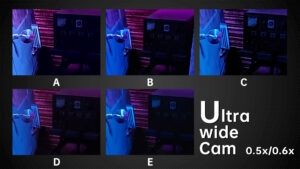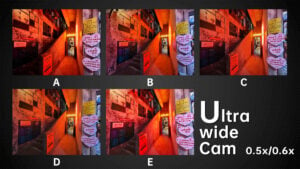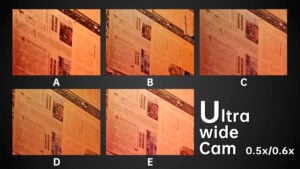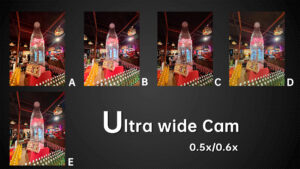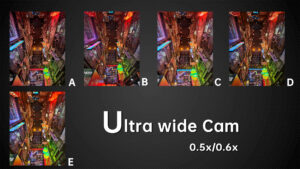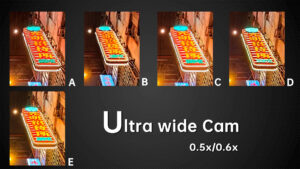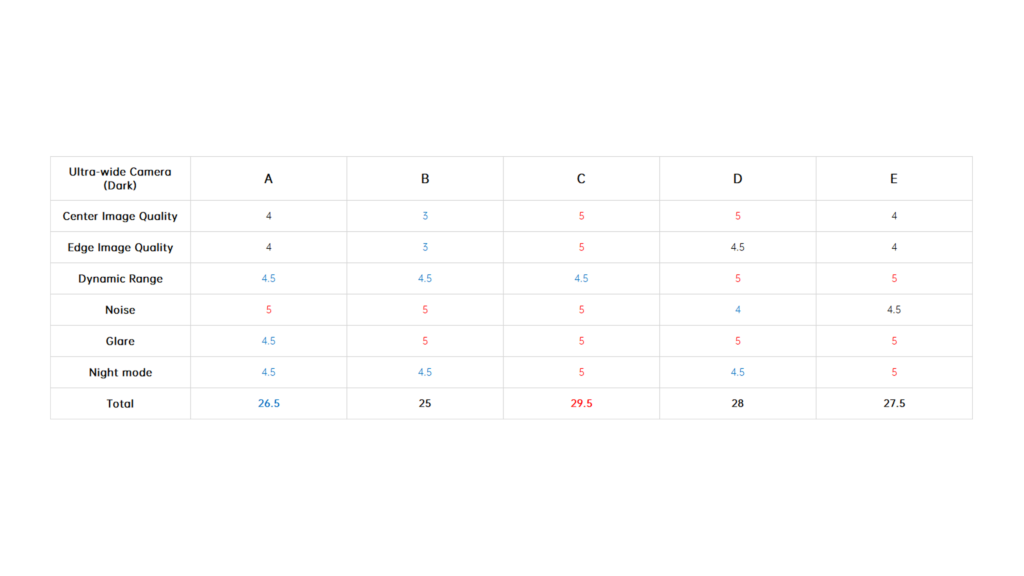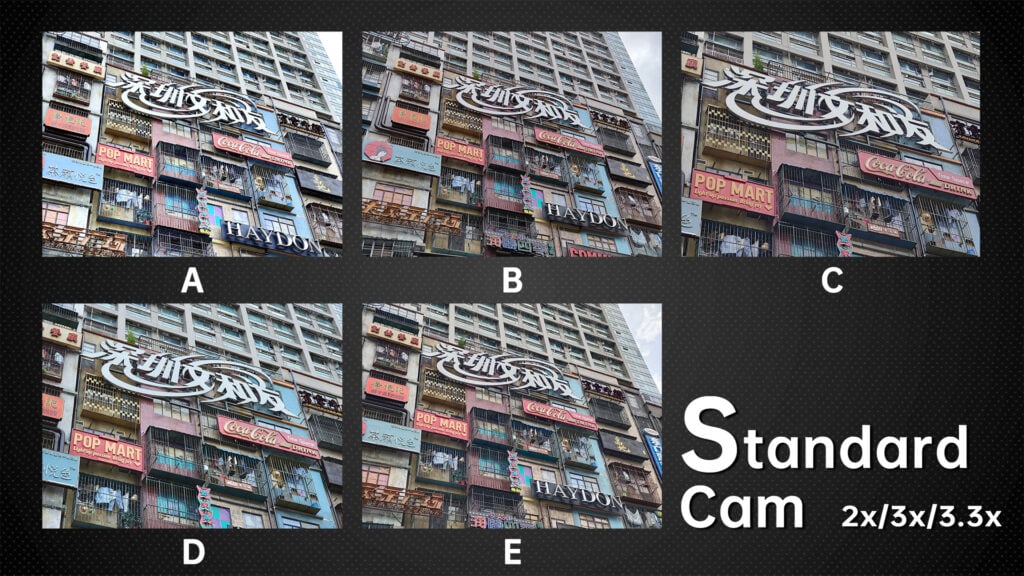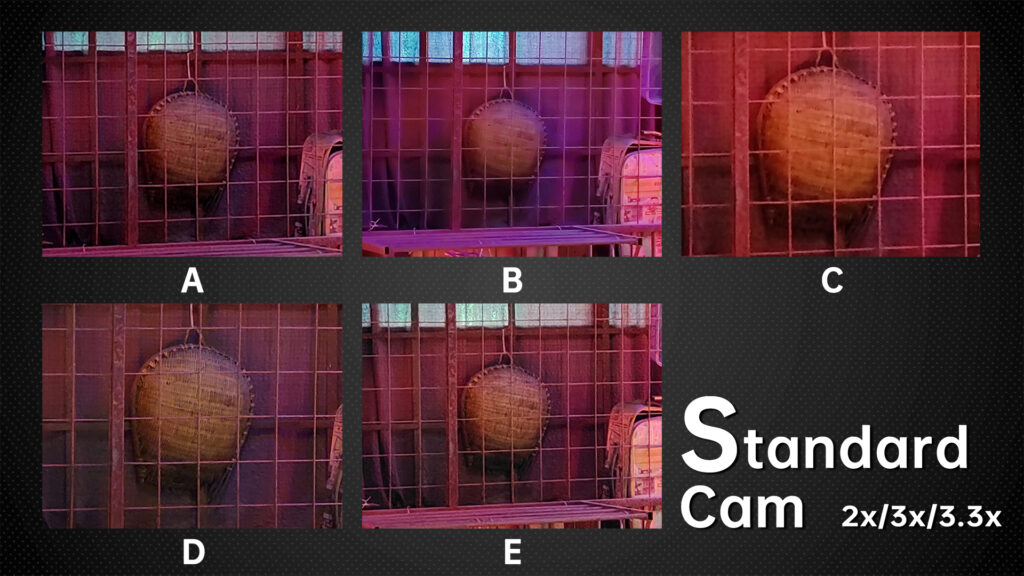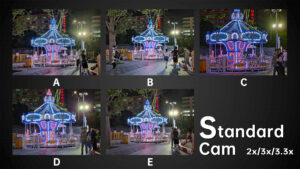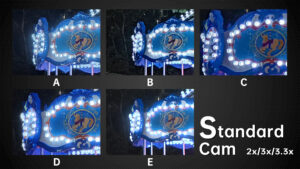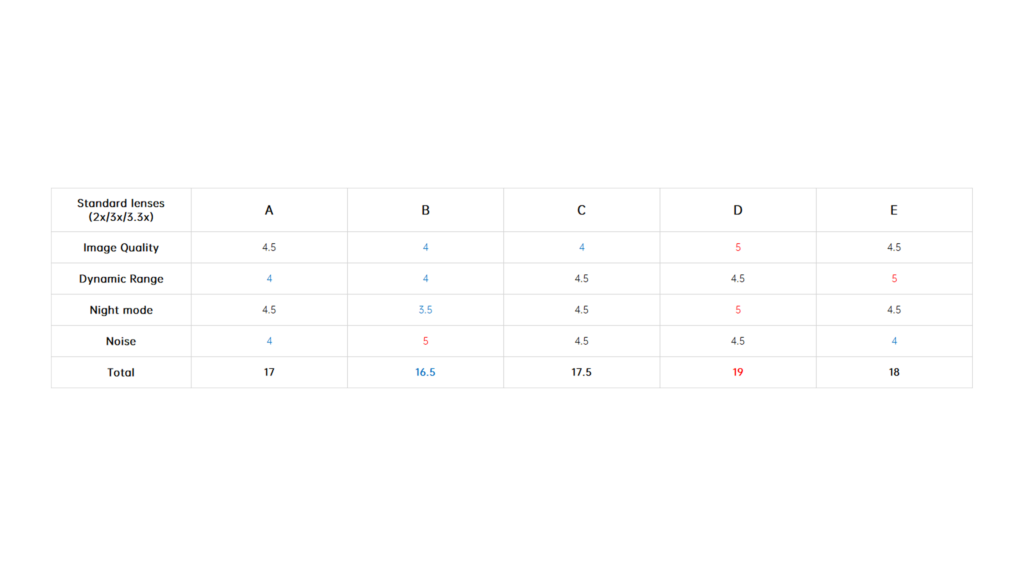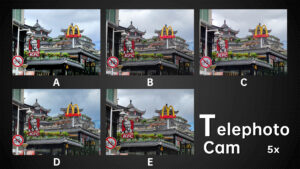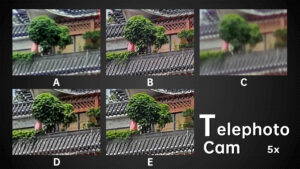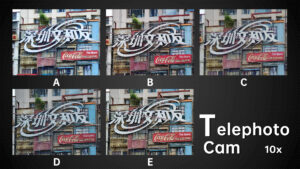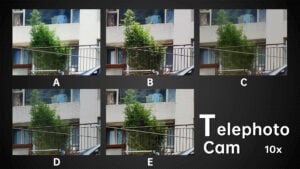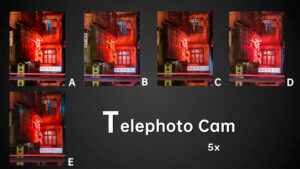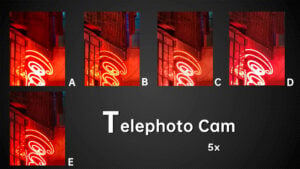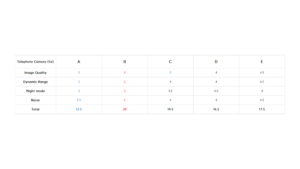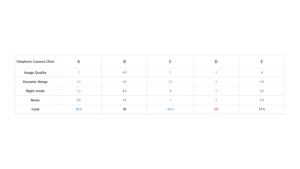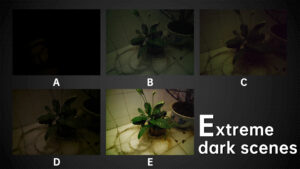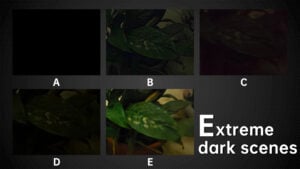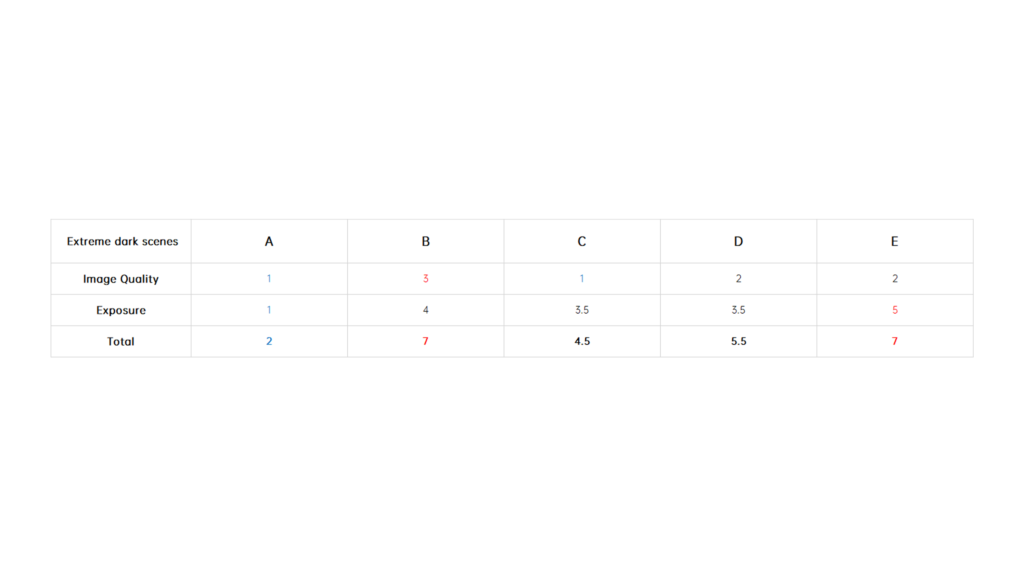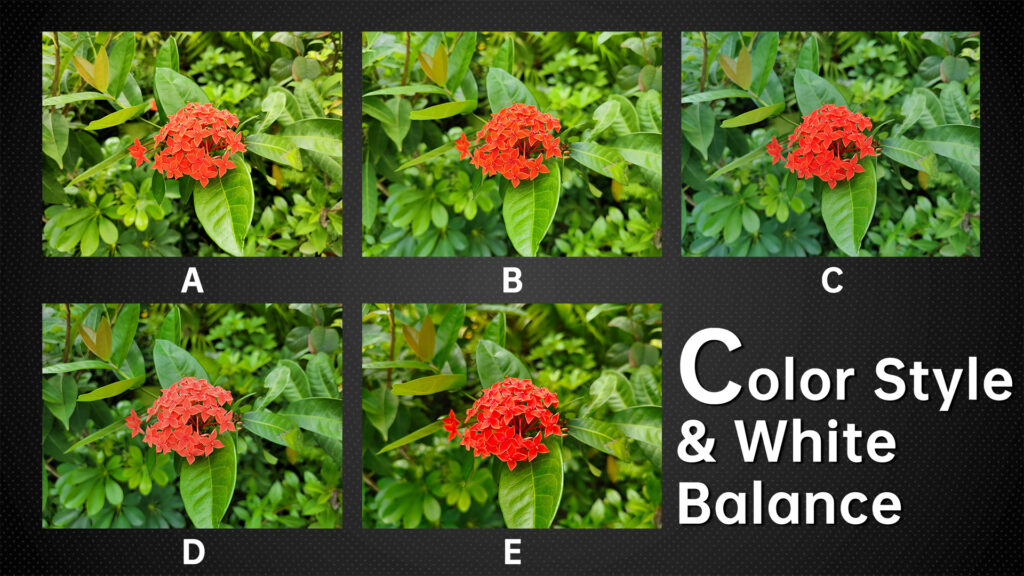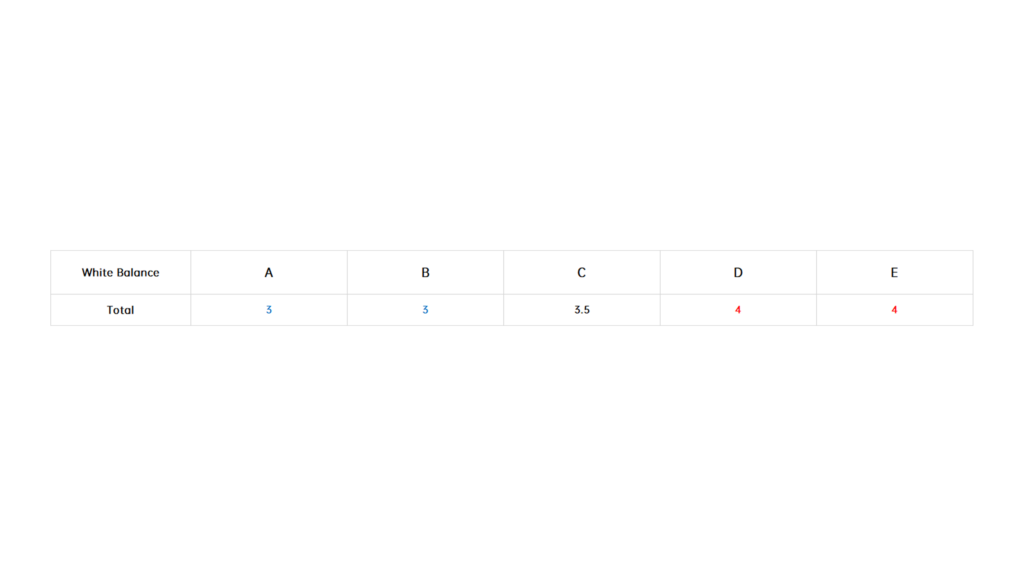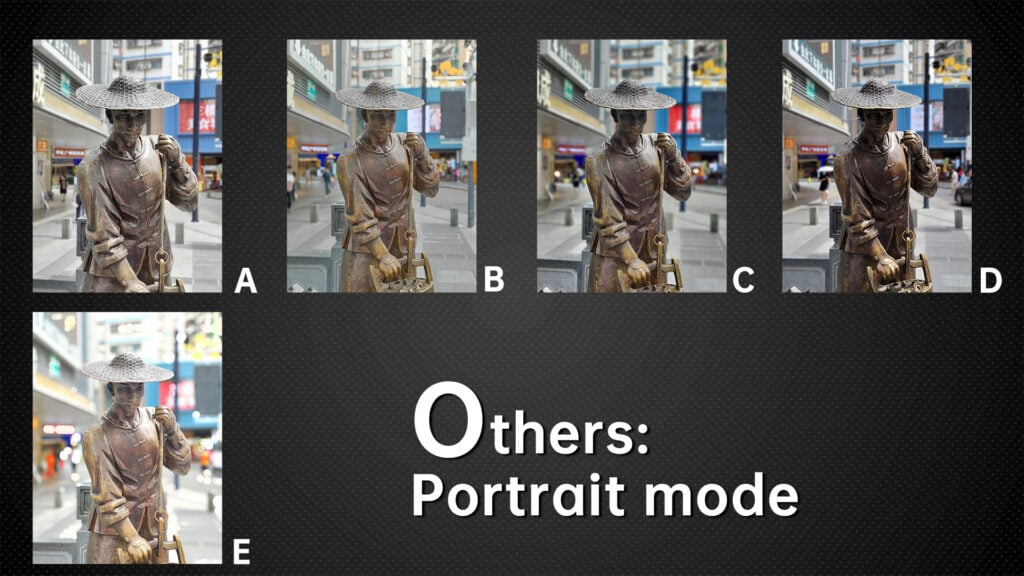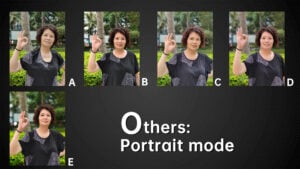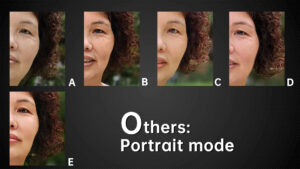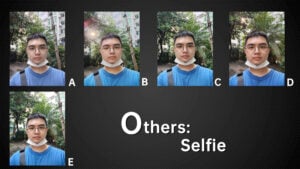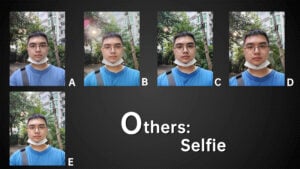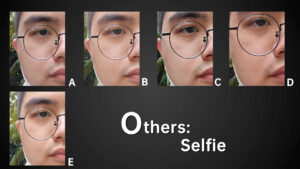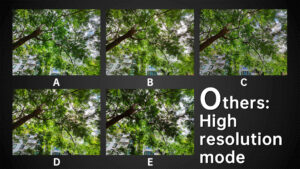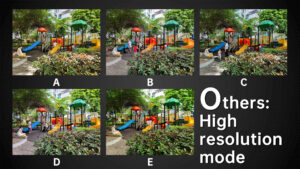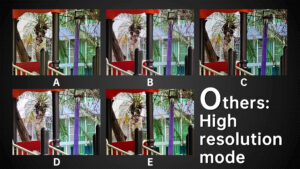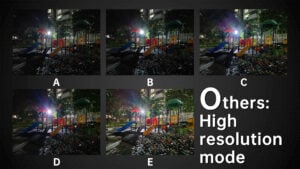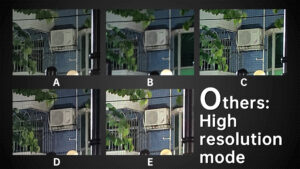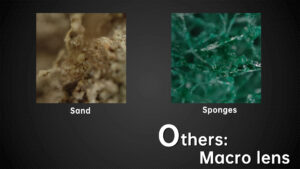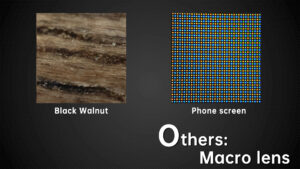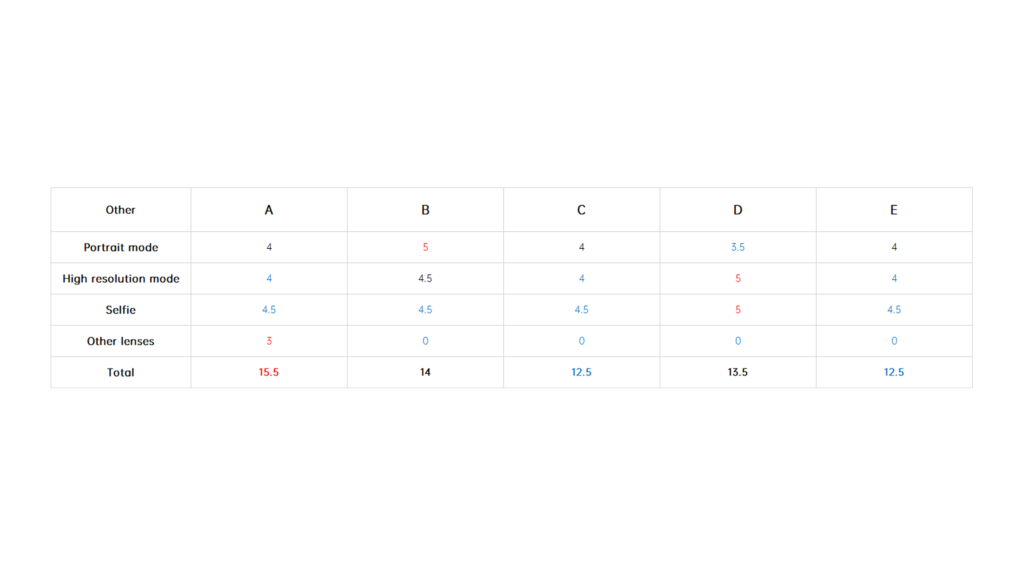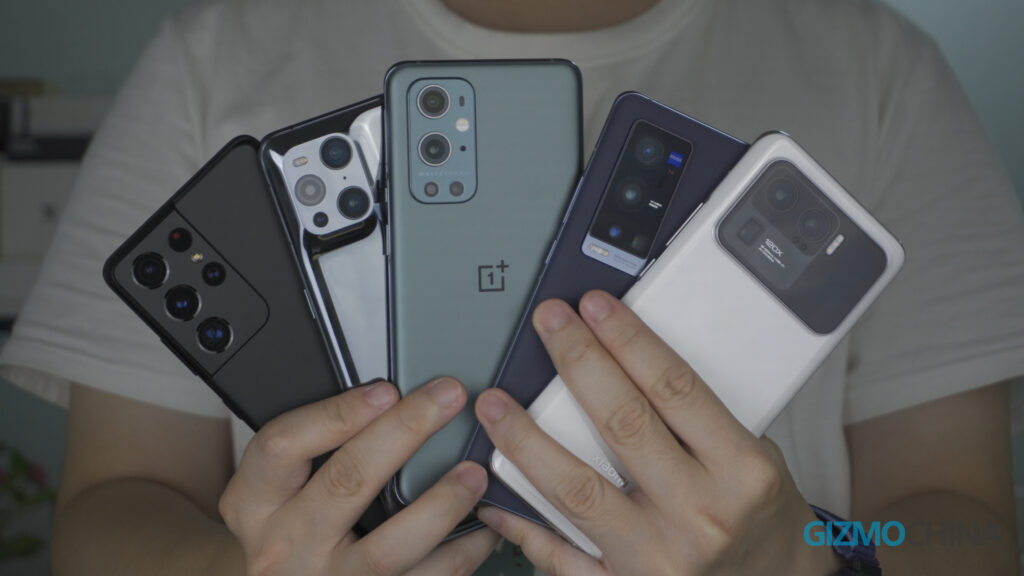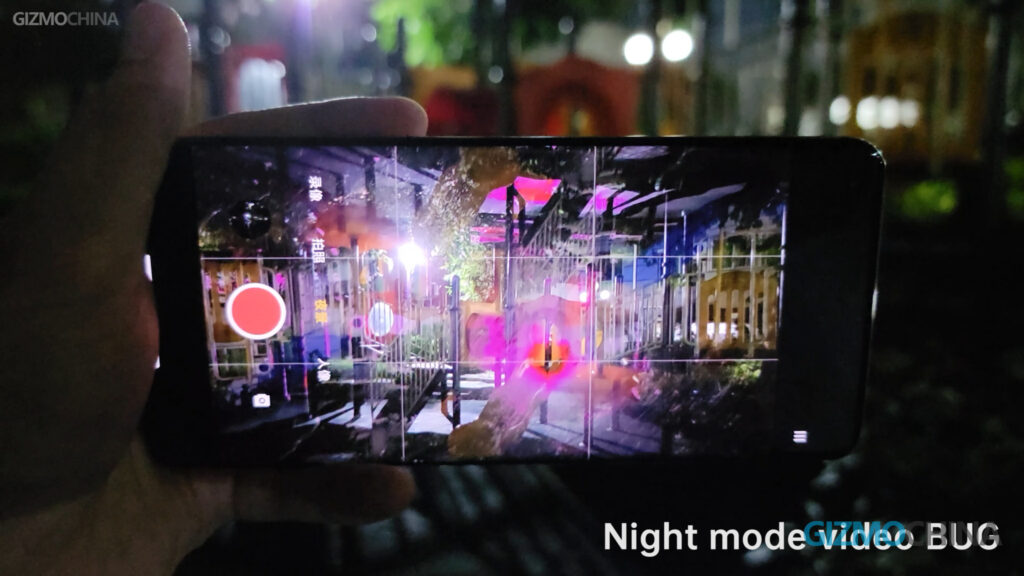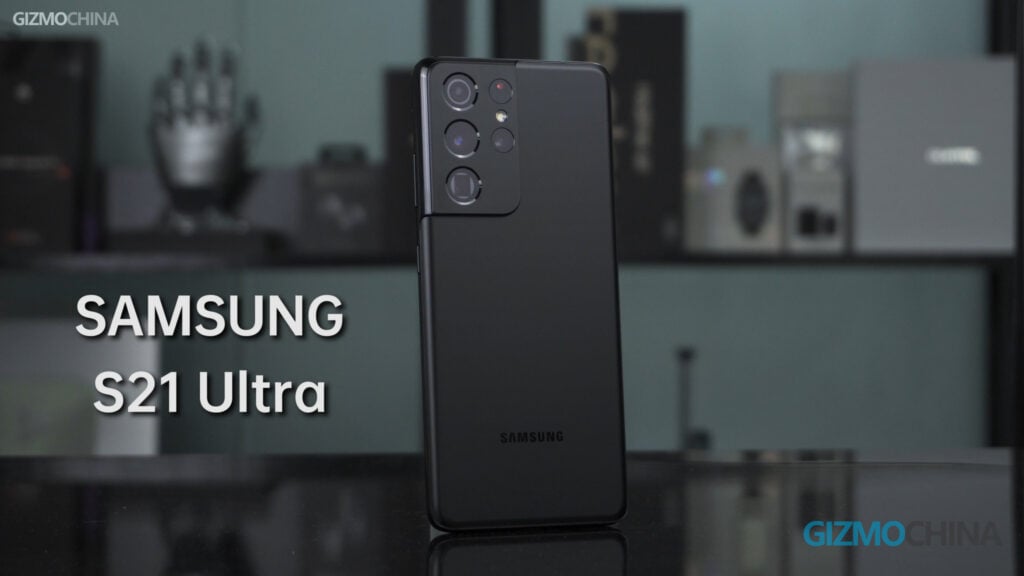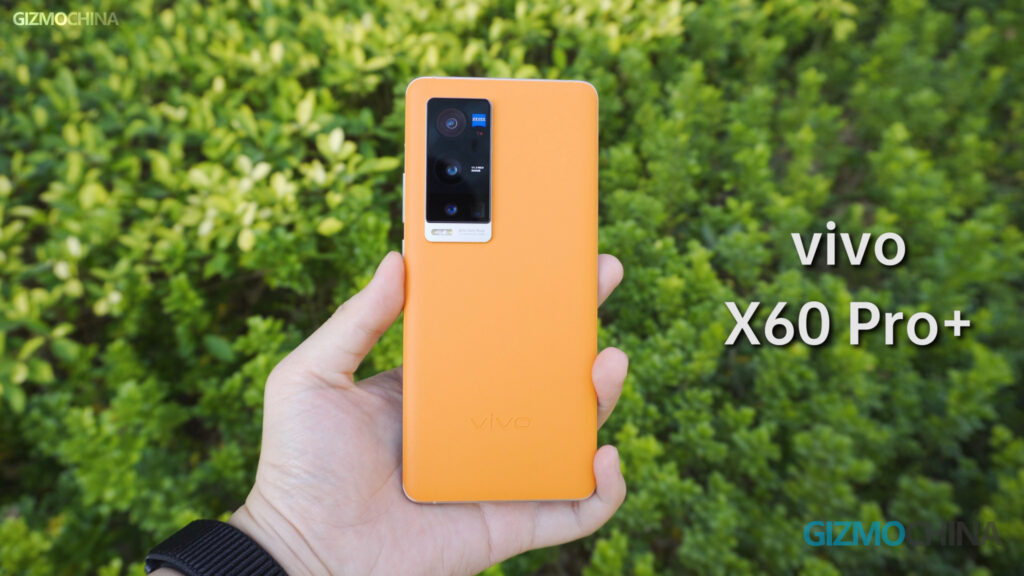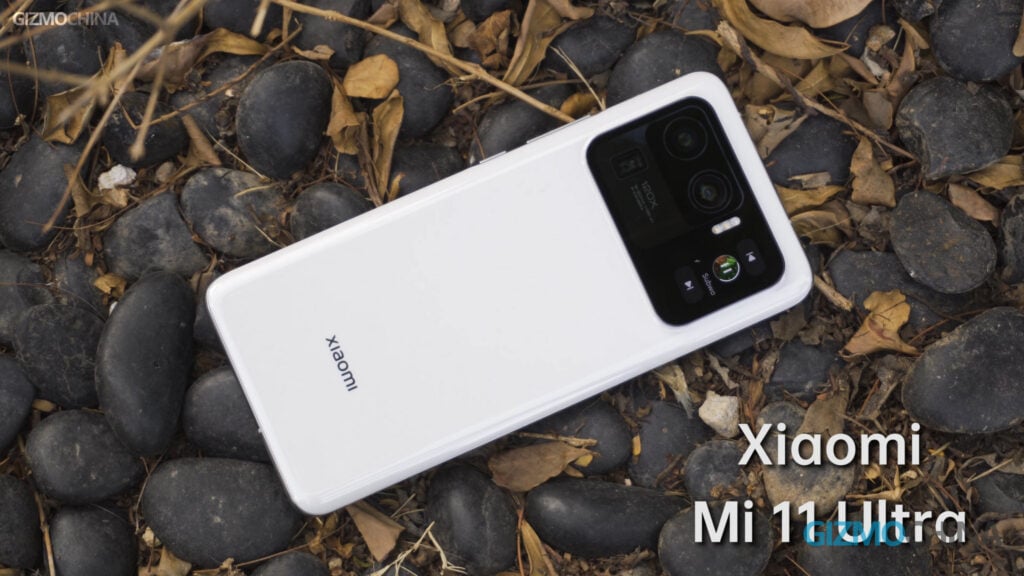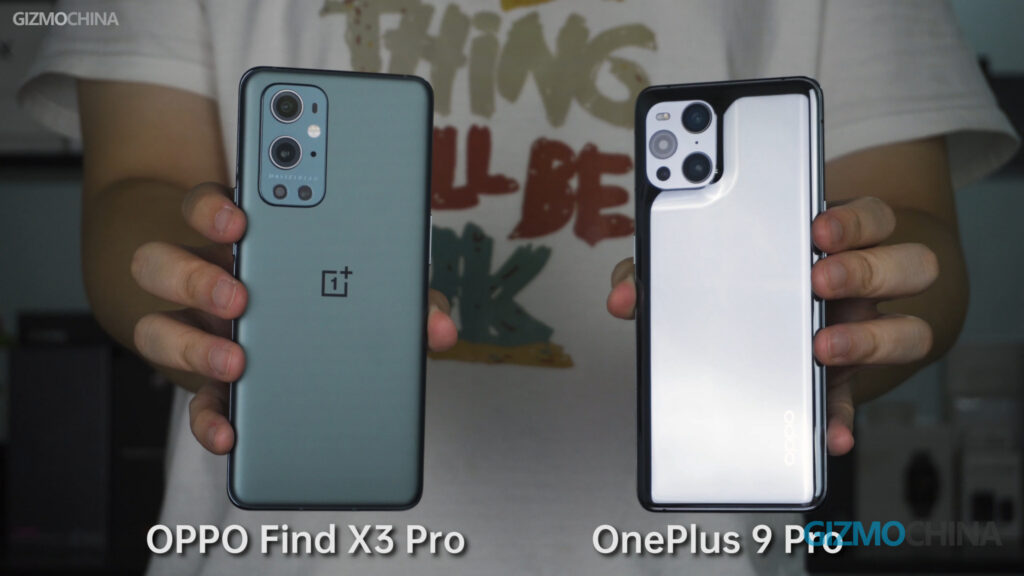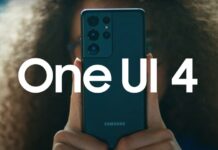We are halfway into 2021, and most smartphone brands have already launched their flagship phones in the market. Taking advantage of the recent releases, we have put together a detailed camera review of the top flagships from five brands.
These are — Samsung’s S21 Ultra, Xiaomi’s Mi 11 Ultra, VIVO’s X60 Pro+, OPPO’s Find X3 Pro and Oneplus’ 9 Pro. In this article, we will compare the advantages and disadvantages of each phone in the camera department. This article is a bit long, but be patient, and you’ll know which phone offers the best photography experience in the first half of 2021, and we’ll also point out each model’s shortcomings and strengths.
So here is Gizmochina’s review of the best camera flagship phone for the first half of 2021.
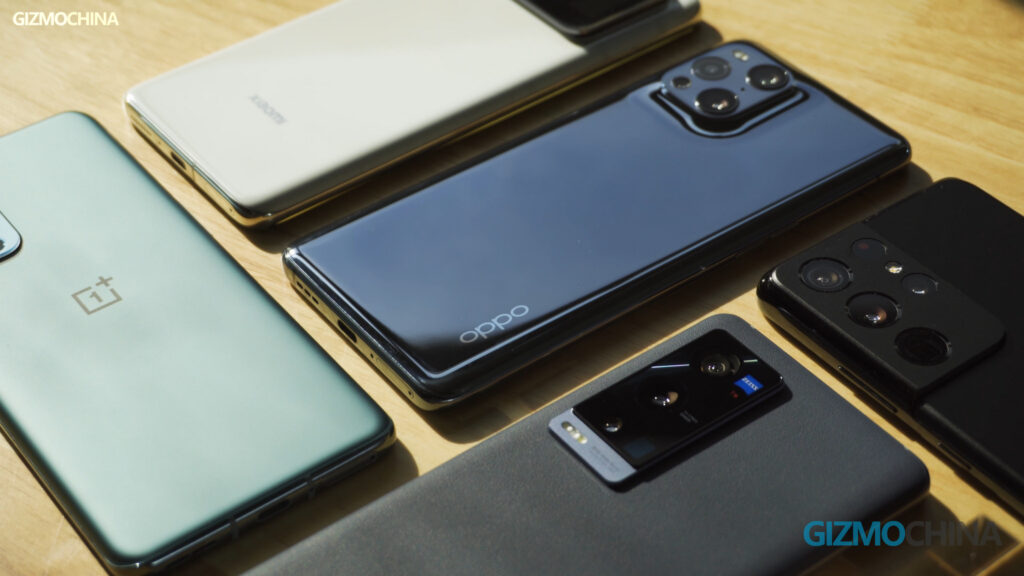
Before we start the comparison of the camera samples, let’s review the camera specifications of the five phones, so please look at the table for details. Each phone defaults to AI mode, with auto HDR, flash disabled, and other factory settings when shooting. In order to avoid the preconceived brand effect, the evaluation will obscure the phone model for the audience to speculate, and their identities will be announced at the end of the article.
1.1 Main Camera (Bright)
When the lighting is good, all the five flagship phones perform very well. For the minute differences, we need to zoom in and look carefully.
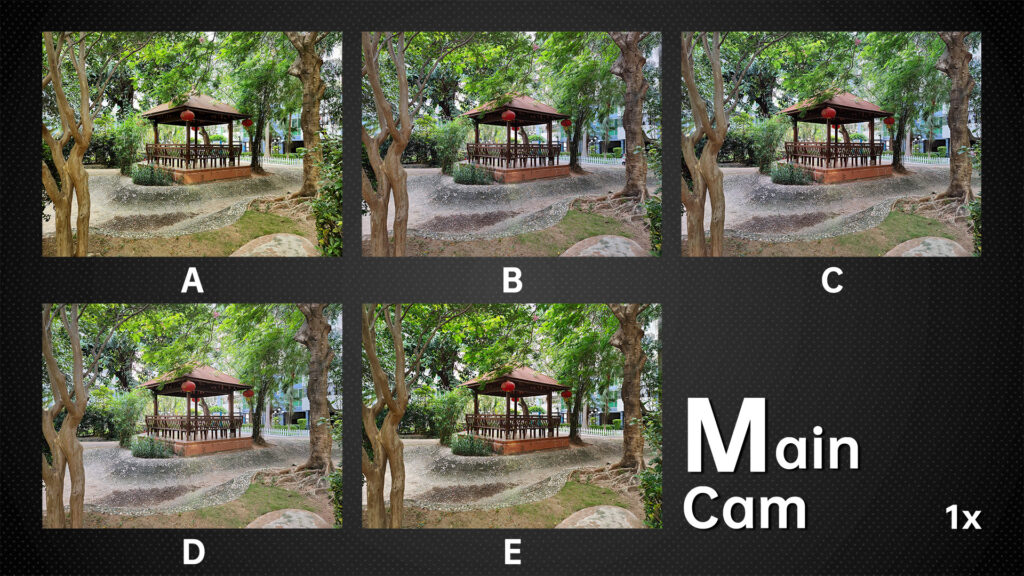 Let’s take a look at this photo of the gazebo first, the performance is basically the same without zooming in.
Let’s take a look at this photo of the gazebo first, the performance is basically the same without zooming in.
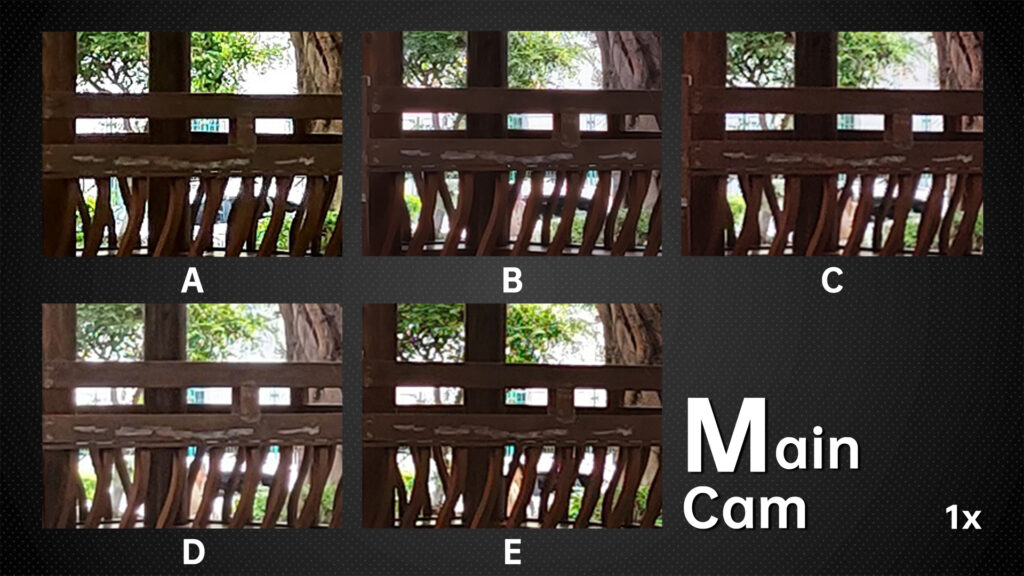 And when we zoom in, we can see that the resolution at the center of the picture is very similar among all the five models, but we can still see that B performs relatively better than others as the cracks on the pillar are visible. The other three models are at the same level.
And when we zoom in, we can see that the resolution at the center of the picture is very similar among all the five models, but we can still see that B performs relatively better than others as the cracks on the pillar are visible. The other three models are at the same level.
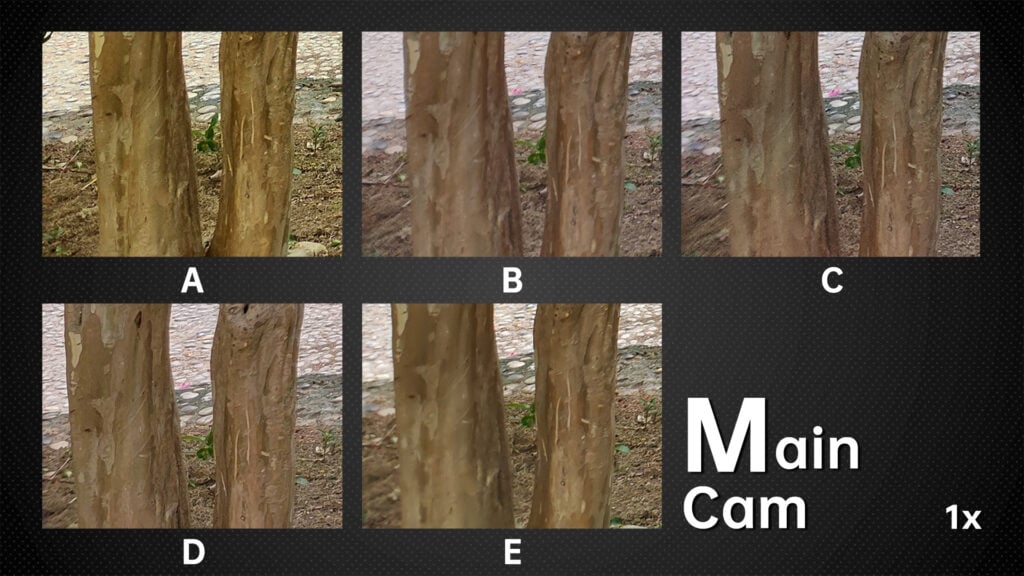 On the other hand, when it came to the edges of the image, A and D performed the best while the other three models had similar but slightly inferior details.
On the other hand, when it came to the edges of the image, A and D performed the best while the other three models had similar but slightly inferior details.
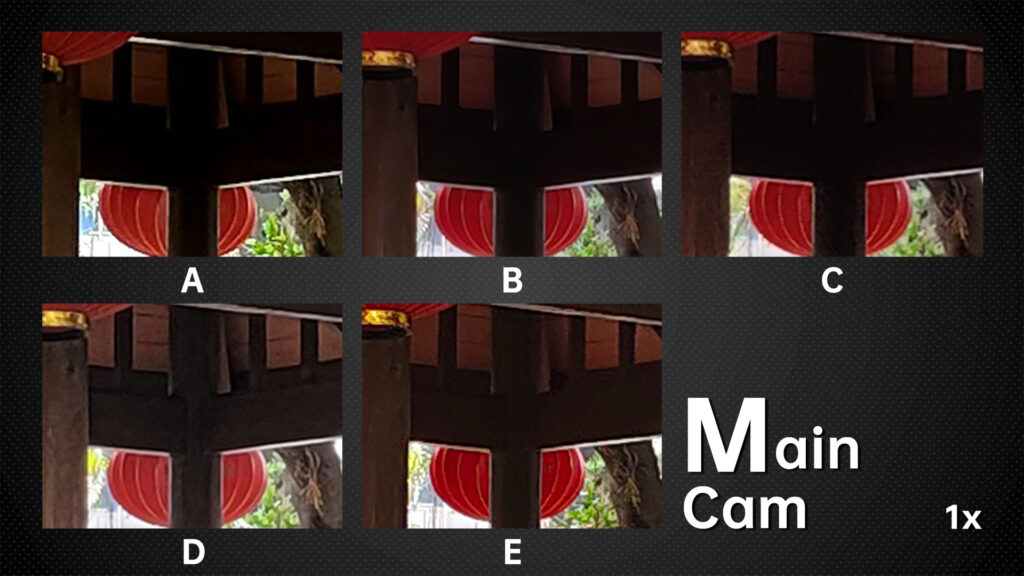 The D is seen to have the most noise at first glance, and it is obvious that the noise reduction processing of D is more negative. E also has more noise. Notably, the noise reduction processing of the, A, B, and C are stronger.
The D is seen to have the most noise at first glance, and it is obvious that the noise reduction processing of D is more negative. E also has more noise. Notably, the noise reduction processing of the, A, B, and C are stronger.
So the final score for this session is shown in the table. B and C are tied for first place, while D lags behind the other models because of the weak noise reduction.
1.2 Main Camera (Dark)
This photo of Coke embedded in a wall has a lot of details. But the situation is different in low light than when there is plenty of light. B has the worst central image quality performance, with no signs of sharpening, but it also the least detail.
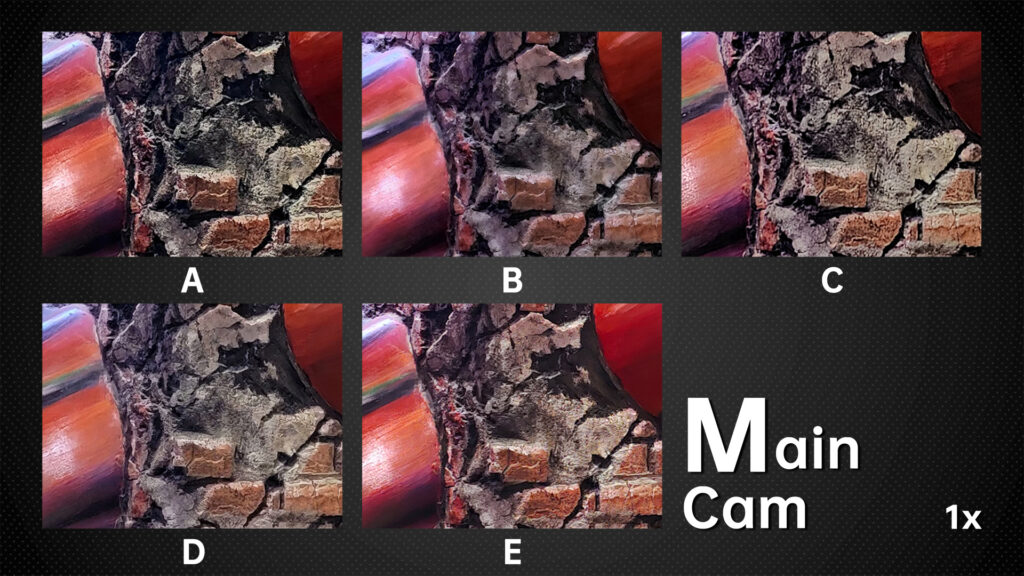 We got the best details from D and E, where the texture of each brick is clearly visible. A has some sharpening, but the detail is still great. C has too much sharpening and looks worse.
We got the best details from D and E, where the texture of each brick is clearly visible. A has some sharpening, but the detail is still great. C has too much sharpening and looks worse.
And from this indoor sample of complex lighting, let’s check the image quality at the edges. D leads the pack, with clear lines of wire mesh. A and C have clearer lines, and C has the strongest sharpening of the five. E has false colors, and the B model has blurred images, performing significantly worse than the first three phones. The dynamic range of all five phones is similar, while A captured underexposed images in the dark and D overexposed the samples in the upper right corner of the light sign, so we deducted some points from both these models, but we couldn’t find any other fault. This picture tests the noise control and glare control of the phone.
After zooming in, you can see that B has the best noise reduction. C and E are the ones with the most noise. The glare is about the same for everyone.
The night mode improves low light scenes and should be used very often. Fortunately, the night mode is very well tuned on each of the five models. A is still not as detailed in the dark as the other four, and its sharpening in the night mode is the worst among the five phones. B‘s highlights are not controlled and the details are the least.
So the final score is as follows.
The best score in this segment is D, and the other four phones do not have much difference in performance in this segment.
2.1 Ultra-wide Camera (Bright)
Take this example of a large bell, shot in the backlight. C has the best performance in the resolution at the center of the image taken from the ultra-wide-angle lens. B is also good because there is almost no over-sharpening so it looks very natural and you can see a lot of details. This is followed by A and E, which look a little worse because of the obvious sharpening signs. The last is D, which has the least amount of grain detail.
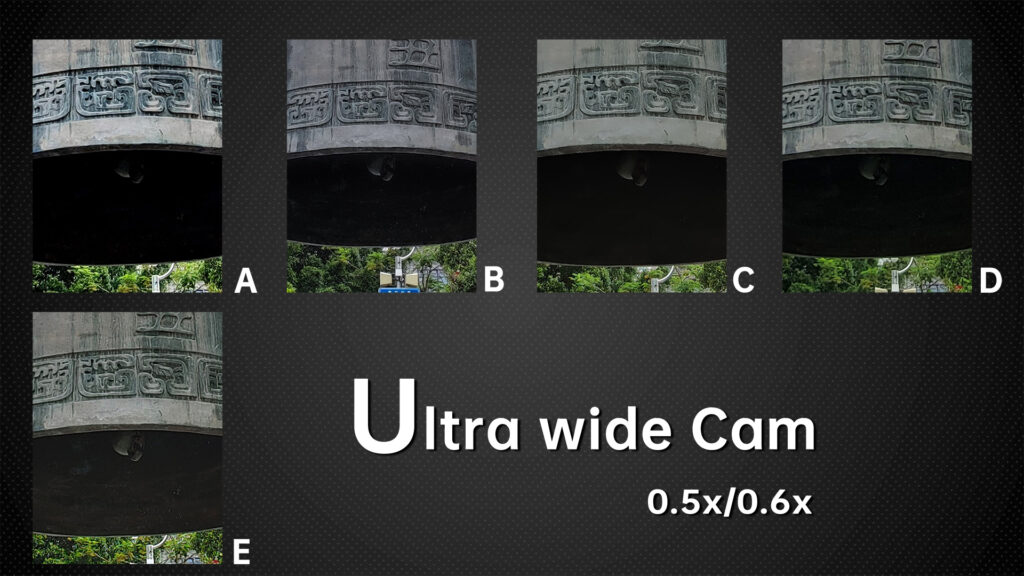 Still in this photo, a closer look at the internal details of the bell reveals the gap in the dynamic range. E and B are the two best performers, followed by D, in both of which we can see the details inside the bell. A and C, on the other hand, are almost pitch black.
Still in this photo, a closer look at the internal details of the bell reveals the gap in the dynamic range. E and B are the two best performers, followed by D, in both of which we can see the details inside the bell. A and C, on the other hand, are almost pitch black.
The edge details of an ultra-wide sample has always been one of the most difficult tasks for brands to optimize. The difference is evident in this photo of the tree. A came out on top in this category, both in terms of resolution and control of the purple-fringing issue. B is a little less resolved, but the purple-fringing issue is well controlled. C and D are very good in terms of resolution, but they have a slight purple-fringing issue. The worst is E, which does worse in terms of resolution and purple-fringing issues. However, the noise control of E is good and comparable to that of B. The other three units have average noise control.
Finally, look at their picture distortion control. Because they both have anti-distortion processing, so the actual difference is very small. Except for B, which seems to have a little bit of distortion, it is hard to tell who is stronger and who is weaker with the naked eye.
The final score is shown in the table, and B got first place in this session with its stable performance.
2.2 Ultra-wide Camera (Dark)
Under dim indoor light, the ultra wide angle cameras with average sensors are tested to the extreme. Look at the words on the car, the sample from B basically can’t be read anymore. In the samples from A and E, we can still read a few letters. While in the samples from D and C we can basically see all the letters. The D‘s ultra wide-angle lens, like its main camera, continues to have the most noise. Others have better noise control.
We can also use this picture to judge its edge picture quality. The newspaper posted on the wall is a measure of the edge image quality. The difference between the five phones is very obvious, with B again at the bottom of the list, and the small text disappearing. C‘s edge image quality drops very little compared to the center image quality, which is great. D is also very good. Whilte A‘s excessive sharpening makes the image look very messy, E shows slightly false colors.
Let’s change the scene and see how each brand performs in situations with high contrast between light and dark. It is easy to see from the Coca-Cola logo and ceiling that E has the best control of highlights and the sample from D has the most detail in the dark. The other phones also have excellent dynamic range performance and excellent glare control. A has a little more glare than the other phones, but it doesn’t affect much, so 0.5 points are deducted. From this scene with complex light sources, the five phones don’t look much different with night mode on. B is still the same as in the auto mode, with poor image quality at the center. A still has obvious signs of sharpening. D’s night mode is a little blurry. C and E performed relatively well.
The final results of this session are shown in the table, C got the highest score in five of the six tests and easily took the lead in this session.
Standard lenses (2x/3x/3.3x)
Since these five phones have different standard lens focal lengths, we chose their respective focal lengths for comparison, with B using a 2x zoom on the main camera.
Looking at the daytime samples with plenty of light, they are not much different except for the difference in focal length.
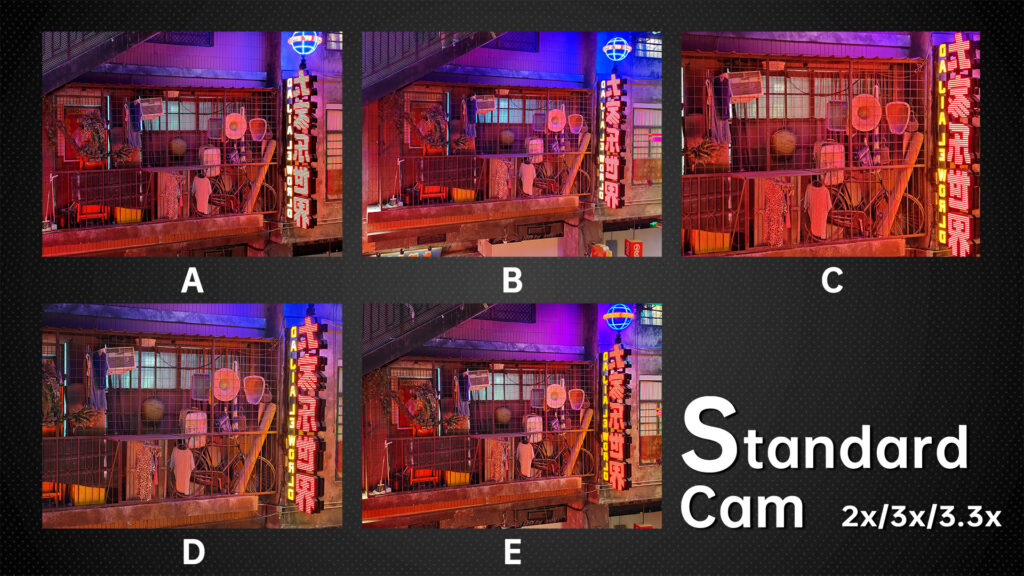 So we look directly at the indoor dark light samples. Without zooming in, you can see the dynamic range of each brand of phone just by looking at the picture. The best photo would be E, followed by D and C. A and B are at the bottom.
So we look directly at the indoor dark light samples. Without zooming in, you can see the dynamic range of each brand of phone just by looking at the picture. The best photo would be E, followed by D and C. A and B are at the bottom.
Now Let’s zoom in to see the picture quality. D is undoubtedly the best, followed by E and A. Lastly, let’s check out B and C. B also has the least noise due to the powerful noise reduction. The noisiest ones are A and E.
In the night scene mode competition, because C is not supported by the medium focus night mode, I believe C’s manufacturer is very confident in its automatic mode, so the score is with normal mode of calculation. The resolution of D is the best. B has the most severe sharpening.
So the final scores are in, and D wins this session again.
Telephoto Cameras(5x/10x)
Because D has 10x optical zoom, we review the 5x and 10x together. The small samples may not be visible in the above image, but the difference in the original picture is still obvious. You can see that B has the most details, followed by E. D is slightly weaker than E, but the remaining two are too blurry, especially the C.
In the 10x sample, ignoring the sudden overexposure bug of A, the image quality of D surpassed the top two and got first place.
The rest of the phone ranking is basically the same as 5x zoom samples. The gap is even more pronounced in dark indoor environments. B is still unbeatable in terms of dynamic range and noise control, while E also performs well. With night mode on, the dynamic range of A has improved, but the noise has also increased.
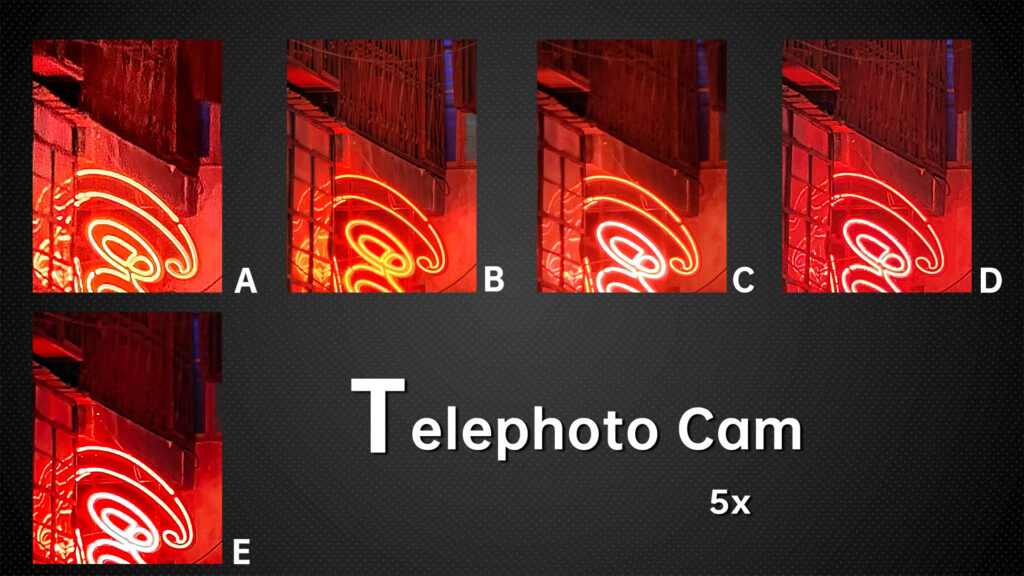 The night mode of E seems to have regressed compared to the auto mode, the image has become blurred, and we’ll explain why this happened in the camera experience session later. Of course, C still doesn’t support night mode for telephoto. D outperformed B in the 10x photos, and the rest of the conclusions are almost identical to the 5x photos, so I won’t repeat them.
The night mode of E seems to have regressed compared to the auto mode, the image has become blurred, and we’ll explain why this happened in the camera experience session later. Of course, C still doesn’t support night mode for telephoto. D outperformed B in the 10x photos, and the rest of the conclusions are almost identical to the 5x photos, so I won’t repeat them.
The final scores are shown below, with the 5x telephoto and 10x telephoto winners being taken by B and D with perfect scores in each category, respectively.
Extreme dark scenes
Inevitably, there are times when you need to use your phone to take pictures in almost no light. In such scenarios, we don’t need to consider other factors, and as long as the target object can be photographed, it is considered a success. So this session is a test of the extreme light-sensitive ability of the five phones. Usually, the main camera’s night mode is the most powerful mode for each phone, so we have used it for this test. In terms of exposure alone, E was the brightest. A was so dark that it was impossible to tell what was being photographed. B retained the most details in the picture, followed by D and E. The conclusion of the competition in this segment is very obvious, because the exposure of the picture is more important than the clarity of the shot, so the weight of the score of the picture quality will be smaller in this segment.
Obviously, E wins this round.
Color Style & White Balance
Just as different brands of cameras have different color science, the five phone brands have different understanding of what colors makes the samples better. E and A usually have the highest saturation. C’s saturation is turned up while brightness is turned down to make colors more intense, especially reds and greens. D and B also increase saturation, although the strength is not great and there is little difference from what you can see with the naked eye. Color style preferences vary from person to person and are not evaluated here, but whether the white balance is accurate can be measured uniformly. So take a look at the white balance uniformity of each phone’s main camera.
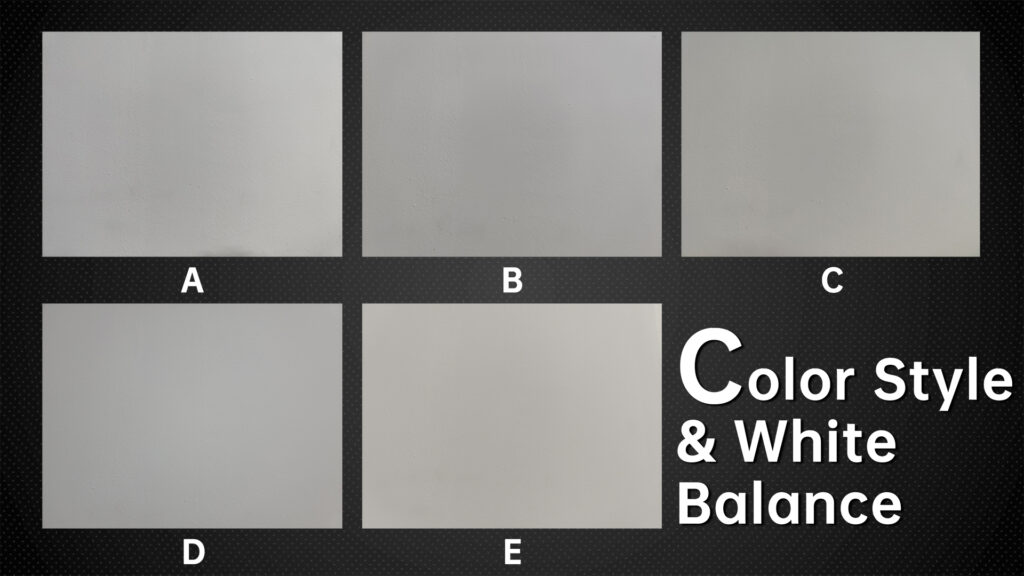 With AI mode turned off, we take a photo of a white wall. It’s hard to see which phone is doing a bad job with white balance, except for the different exposure strategies, so let’s take a different photo.
With AI mode turned off, we take a photo of a white wall. It’s hard to see which phone is doing a bad job with white balance, except for the different exposure strategies, so let’s take a different photo.
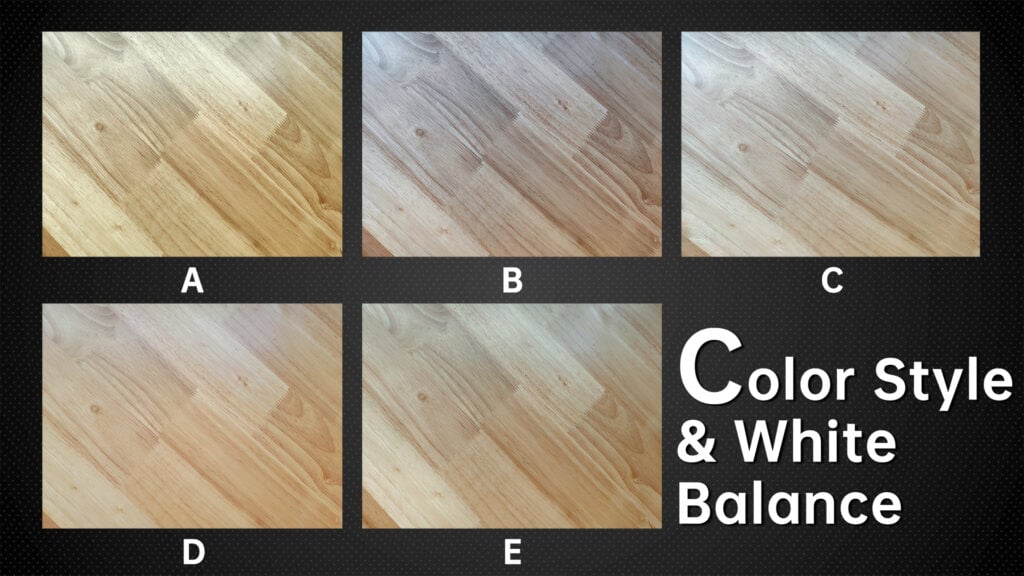 The picture of this table has a large yellow area, which is very difficult for a phone with a poorly tuned auto-white balance. It can be said that every phone does not do a good enough job of adjusting the white balance.
The picture of this table has a large yellow area, which is very difficult for a phone with a poorly tuned auto-white balance. It can be said that every phone does not do a good enough job of adjusting the white balance.
A is obviously yellowish, B, C and E are blue-green, and D is red. If you pick the best one, D and E are relatively well done.
So the best score in this session goes to D & E, the remaining three phones still need to work on their color tuning.
Other modes
Portrait mode is also a frequently used mode. This mode tests the accuracy of its face exposure strategy, beauty algorithm and portrait keying. This bronze statue wearing a hat has very heavy shadows on its face, but B does a good job of balancing the background with the exposure of the face. E has a great exposure for the face and automatically adds some light spots to the background. D has a dark face.
The woman’s picture is mainly about her hair keying and face details. It is too difficult to key in the hair, and all of them do a bad job here. B does a relatively good job, with less breakage. And the beauty effect on E is the most powerful, but here B is the weakest. Of course, Beauty can be turned off, so it is not included in the rating system.
If you only look at face exposure and keying, B has the best performance in portrait mode.
This time we also tested the selfie effect of the front lens. With factory settings, A and C had the strongest beauty effect, and all other phones looked more realistic. After we turn off the beauty on all phones, C and D have the most details.
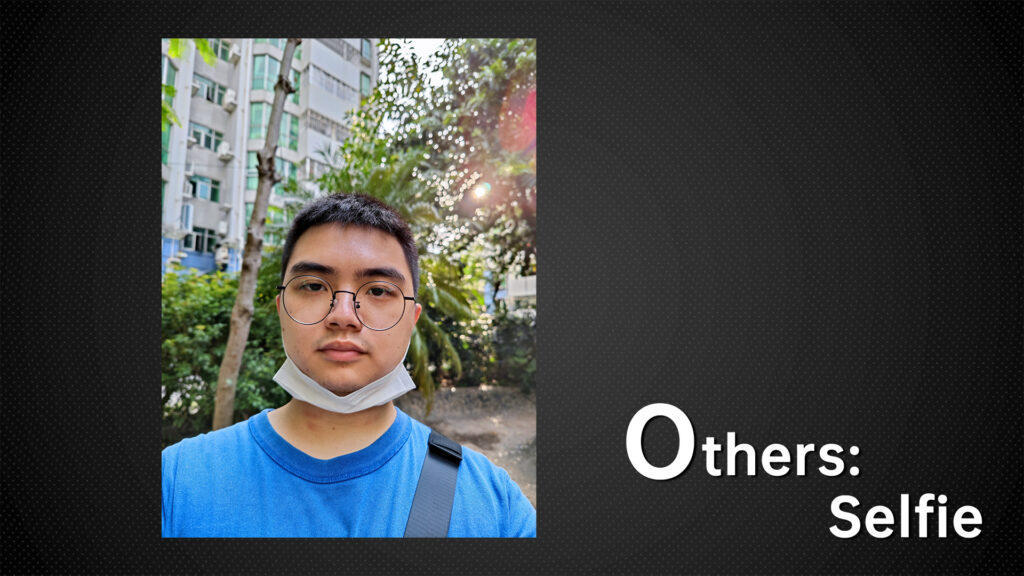 We all know that B is able to take selfies with the small screen on the back, and it beats other phones in terms of clarity and depth of field. But this round of testing is the front lens so it does not count in the score.
We all know that B is able to take selfies with the small screen on the back, and it beats other phones in terms of clarity and depth of field. But this round of testing is the front lens so it does not count in the score.
In the high-resolution mode competition, E is not able to activate HDR in this mode, so the dynamic range will be smaller than other phones that can turn on HDR. This can be easily seen from the exposure of the tree trunk. In a different scene, in a light and not backlit scene, the best resolution is D and B, and the worst is A. But in the same scene at night, basically, every phone is close in performance regardless of the pixel level. So It seems that the high-resolution mode should be used in the daytime.
Only A has a dedicated macro lens, which is not used very often but is very interesting. It can take a lot of perspectives that other phones can’t, and it can record video, so it’s very usable.
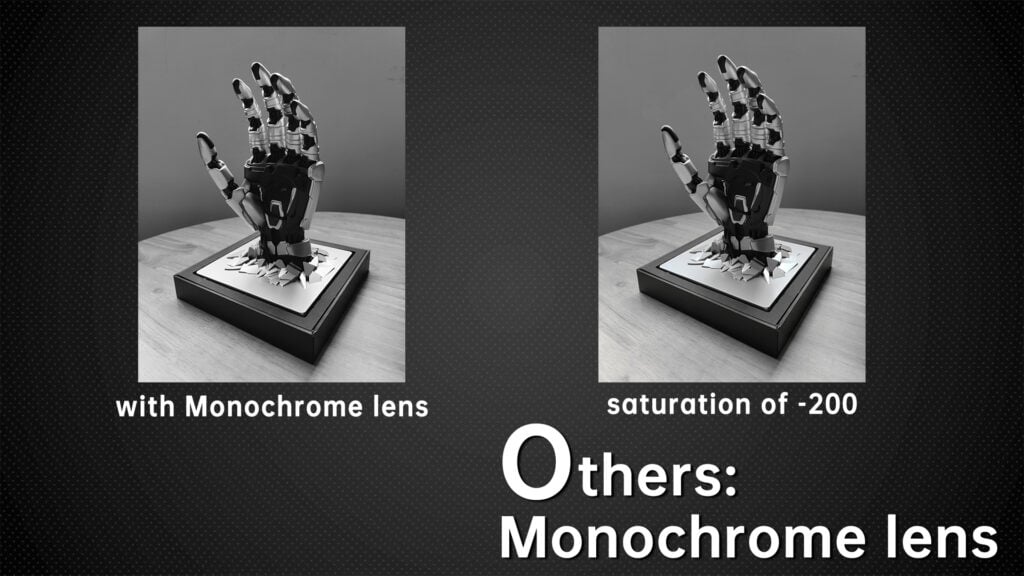 And C has a Monochrome lens, which allows you to take black and white photos. Here is a photo with a Monochrome lens and a direct shot with a saturation of -200, can you see the difference between them?
And C has a Monochrome lens, which allows you to take black and white photos. Here is a photo with a Monochrome lens and a direct shot with a saturation of -200, can you see the difference between them?
So for C, this lens really does almost nothing.
So A won first place in this segment with its macro lens overtaking D. C‘s Monochrome lens did not help in this segment.
Camera Experience
Now comes the final session, namely the camera experience session. During my photo sampling, A and D had the best experience with no obvious drawbacks.
C can only use night mode at 0.6x and 1x focal length, and it is not possible to zoom in night mode.
Night mode on E is likely to call on the main camera to crop the image instead of 2x or 5x optics in low light conditions, which is why night mode is weaker than normal mode ar 5x focal length test.
B’s experience is the worst, not only is the shutter delay the highest of all phones, but there are two bugs that seriously affect the experience. Video stabilization failure can only be solved by rebooting. The night mode of the video will occasionally have a red residue on the screen. And the redness of the screen is quite scary at night.
By this point in the article, I’m sure some viewers have already guessed the corresponding phone models. Now let’s reveal the answer along with the total score table.
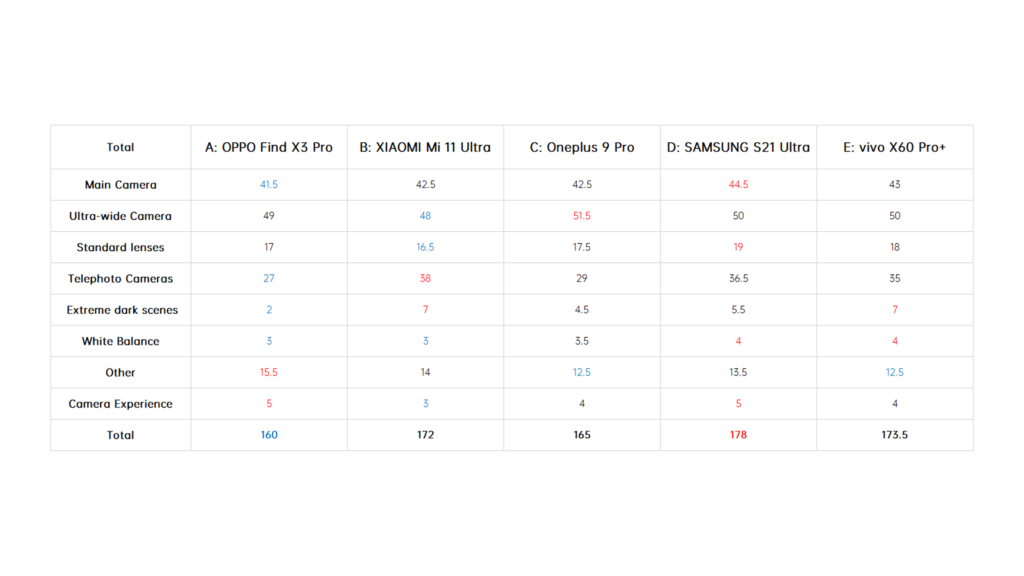
Best Camera Smartphones 2021: VERDICT
In the first place is the very versatile Galaxy S21 Ultra. The phone not only took four firsts in individual categories but was never placed at the bottom in any of the tests.
In second place is the Vivo X60 pro+ which is placed above others for its robustness.
The Mi 11 Ultra in third place has the strongest 5x optical telephoto lens, but the lack of a standard lens and poor tuning of the ultra-wide-angle lens caused it to be no match for the x60 pro+.
In fourth place is the Oneplus 9 Pro which has very good ultra-wide-angle performance, but like the Find X3 pro, it misses too many points because of the lack of an ultra-telephoto lens.
The Find X3 pro does the best job in terms of camera experience and fun, but the optimization for image quality needs to be enhanced.
If you want to choose a phone with the strongest camera right now, the S21 Ultra is the one you want. If your budget is not that high, the X60 pro+ is also a very good choice, and their gap is very small.
So this was Gizmochina’s review of the best camera phones for the first half of 2021. We hope this comparison was useful to you.
RELATED:
- Xiaomi starts testing Android 12-based MIUI builds for Mi 11, Mi 10, Mi 10T series of phones
- Samsung Galaxy S21 Ultra costs 7% less to make than Galaxy S20 Ultra: Report
- Vivo X60t Pro+ launched with 120Hz display, Snapdragon 888, 50MP quad cameras
- Best Gaming Smartphones 2021 Comparison: ROG 5 vs Legion 2 Pro vs Blackshark 4 and more!
v

